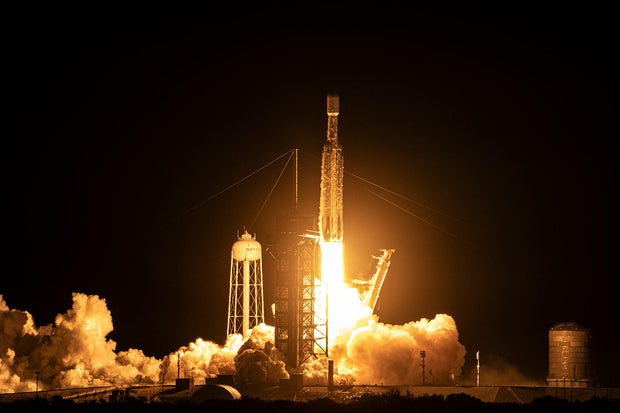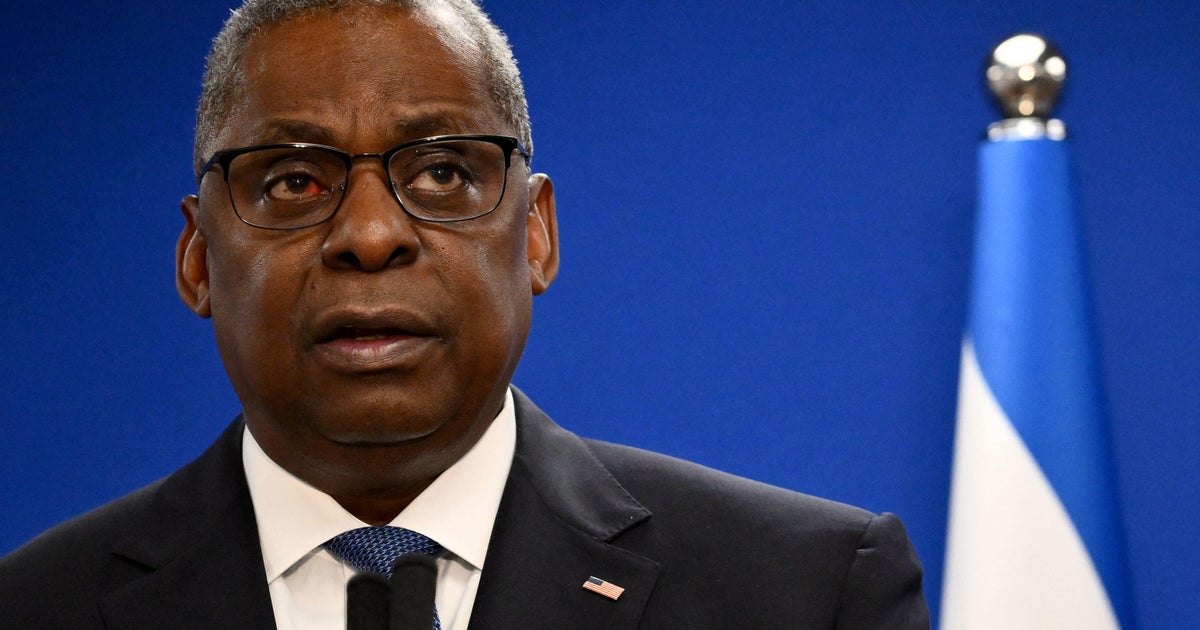In spectacular launch doubleheader, SpaceX puts military spaceplane and 23 Starlinks in orbit
Kicking off a sky-lighting launch doubleheader, a powerful SpaceX Falcon Heavy rocket vaulted away from the Kennedy Space Center on Thursday atop a torrent of flaming exhaust to put an unpiloted X-37B spaceplane into orbit for a classified, long-duration military mission.
At the nearby Cape Canaveral Space Force Station, another team of SpaceX engineers launched a workhorse single-core Falcon 9 rocket just two hours and 54 minutes later, thought to be the shortest span between two U.S. orbit-class missions since the mid 1960s. The two flights were SpaceX's 95th and 96th so far this year.
The Falcon Heavy got off first, putting on a spectacular show for area residents and tourists as its 27 Merlin engines, nine in each of three strapped-together Falcon 9 boosters, ignited with a rush of flame and a ground-shaking roar at 8:07 p.m. EST.
The rocket then climbed away from the Kennedy Space Center atop more than five million pounds of thrust, and lined up on a northeasterly trajectory, rapidly accelerating as the engines consumed propellants and the vehicle lost weight.
The launching originally was scheduled for Dec. 10, but the flight was delayed by predicted bad weather and then by trouble with ground equipment. The rocket was hauled off the launch pad and back to a SpaceX hangar for subsequent work. It was rolled back out to pad 39A earlier this week.
This time around, it was clear sailing. The two side boosters, each making their fifth flight, helped power the vehicle out of the dense lower atmosphere before falling away from the core stage two-and-a-half minutes after launch. They immediately flipped around, reversed course and headed back toward the Cape Canaveral Space Force Station.
Heralded by window-rattling sonic booms, both boosters settled to picture-perfect touchdowns, the 40th and 41st to land in Florida.
The central core stage's nine engines continued firing for a minute and a half after the two strap-ons separated before it, too, shut down and separated from the Falcon Heavy's second stage. Unlike the side boosters, the core stage was expected to use up all of its propellant and no recovery was planned.
No details about the second stage's climb to the spaceplane's intended orbit were released. As usual with such classified military missions, SpaceX ended its launch commentary after the side booster landings about eight-and-a-half minutes after liftoff.
With the Falcon Heavy off the ground, SpaceX engineers at the Cape Canaveral Space Force Station pressed ahead with launch of the single-core Falcon 9 and its payload of 23 Starlink satellites.
Going into the flight, SpaceX had launched 5,627 Starlinks in 131 flights dating back to May 2019. Of the total launched to date, space statistician Jonathan McDowell said 5,211 were presumed functional. Thursday's flight boosted the total number of Starlinks launched so far this year to 1,984 across 63 Falcon 9 flights.
The Falcon Heavy, meanwhile, chalked up the rocket's ninth flight while the X-37B is making that program's seventh.
Two virtually identical X-37B Orbital Test Vehicles, or OTVs, are operated by the Pentagon's Rapid Capabilities Office for the U.S. Space Force. The vehicles are designed to serve as test beds for avionics and advanced sensors, to evaluate reusable spacecraft components and to provide a platform for experiments that can be returned to Earth for analysis.
The Boeing-built X-37B looks a bit like a miniature space shuttle, complete with delta wings, heat shield tiles and a compact payload bay. Unlike NASA's space shuttle, which relied on fuel cells for power in orbit, the X-37B is equipped with an extendable solar array that allows for extremely long flights.
The compact orbiters are designed to end their missions with runway landings at Vandenberg Space Force Base in California or the Kennedy Space Center in Florida using 3-mile-long runways originally built for the space shuttle.
The most recent flight of an X-37B began with launch atop a United Launch Alliance Atlas 5 rocket on May 17, 2020. It ended Nov. 12, 2022, with touchdown at the Kennedy Space Center after 908 days and 21 hours in space.
Through the program's six previous flights dating back to the first launch in April 2010, the two X-37Bs logged a combined 10.3 years in space. The planned duration of the latest mission has not been announced.
for more features.






